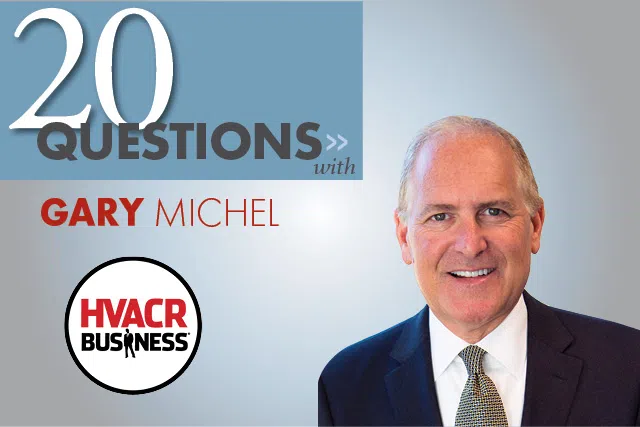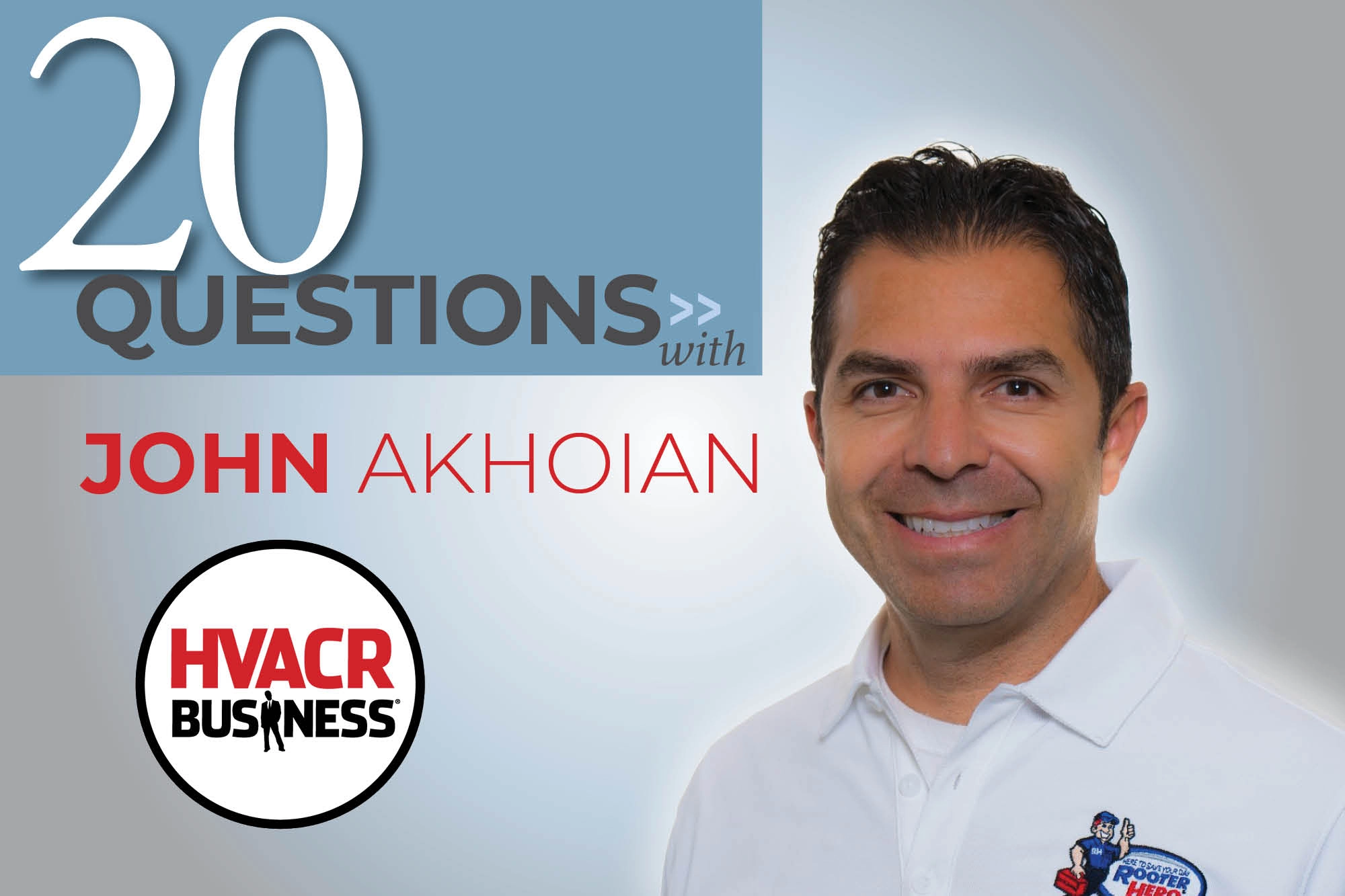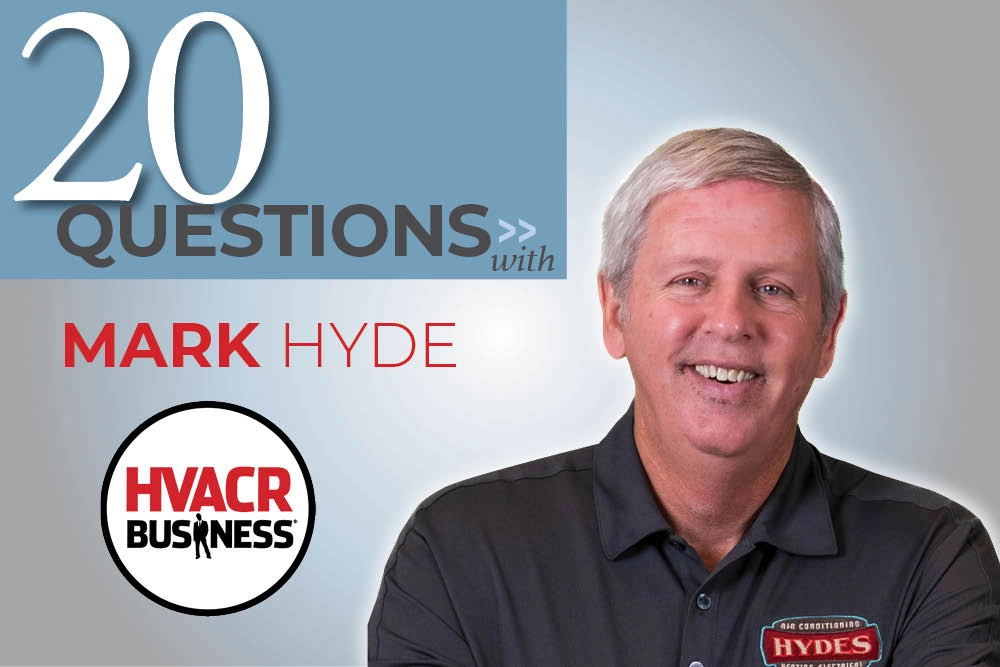Terry Tanker met with Gary Michel, president of Residential HVAC & Supply, which includes brands like Trane, American Standard, Ameristar and Nexia, at the Wynn hotel in Las Vegas during the AHR Expo. The two discussed product development, leadership, understanding customer needs and building business team for success.
1. Is it true you collect clocks?
Yes. I bought the first one about 20 years ago when I lived in Europe. I became interested in the mechanisms that make them work and how they’re built. The first one I bought was French and, after I got it home, I took it apart and then put it back together. I’ve been interested ever since.
2. Is your whole house ticking?
[Laughs] No, just one. But, I do like the sound of them.
3. I hear you’re a golfer — what is your handicap?
Let’s just say that I won’t shoot my age for a while, but I really like to play. I enjoy the social part of golf too; it’s a great opportunity to spend time with people. You can learn so much about them, such as temperament and competiveness.
4. You’ve been with Ingersoll Rand (IR) your whole career — what attracted you to the opportunity at Trane?
After being in IR’s industrial and construction businesses, and then Club Car, I was asked to come to Trane. Each company had its own set of challenges and opportunities. Most of my assignments have been businesses that needed change, and I enjoy working to that end.
5. What sort of changes?
Our product portfolio, for example, needed revamped and is now less than 3 years old. We made those changes based on customer needs. We also improved our channel capabilities with distributors and contractors. Our home automation platform improved significantly, too, with regard to how we interact with our own equipment and diagnostics.
6. How did you organize your team?
There’s always a temptation to surround yourself with people you know, but a key for any leader is the ability to evaluate the talent on any given team. My job is to make sure everyone is in the right role and has the opportunity to perform and grow.
7. Did you bring a new management team with you?
I did bring in some talent from other industries and other parts of IR to round out the team, but that happened over a period of time. Our current team is one of the strongest I’ve been around and they make my job easy.
8. What were the top three initiatives when you came in?
New product development first, and we’re realizing the fruits of that labor now. We also worked hard on our operational capabilities. Lastly, we wanted to offer a great customer experience that was consistent. We accomplished that by spending a lot of time listening to our contractor customers.
9. What was on their wish list?
Contractors want products that are easy to install, available and easy to maintain. So, we strive to do anything we can to help in those areas.
10. When you speak to customers about the portfolio, what’s the pitch?
We have such a large, diverse portfolio that it really varies depending on who we speak to. We developed a variable speed product, Trucomfort, in the 17-21 SEER range and it’s usually a big hit. It’s made a measurable difference in high efficiencies with regard to what consumers pay for electricity as well.
11. Are there specific products that had particularly good results because of the collaboration you had with contractors?
Our S-Series furnace. Contractors worked side by side with our engineers on designing this product, which hadn’t been updated in many years.
12. Where will your focus be the next three years?
Continuing to match our product portfolio with the segments we want to serve. A differentiator for us right now is working on “the customer experience.” HVAC is a confusing purchase and the opportunity to use technology to help make an informed decision is something on which we’ll continue to work.
13. What are your strengths as a leader?
My ability to assemble a team that works well together, along with giving them the tools to succeed. Once those two things are accomplished, giving the team room to develop.
14. What are your business strengths — finance, marketing, R&D, engineering?
[Laughs] I play a little bit in each of those sandboxes and that really comes from time and experience. When I got here, we had a list of difficult things we wanted to accomplish. Understanding how to put the pieces together that ultimately helps us succeed is extremely important.
15. How’s your manufacturing IQ?
It’s pretty good — but not as good as the people who work with me. It’s an art mixed with a bit of science. The coordination required in a plant is extraordinary and, of course, you have to have talented managers and line workers. Done well, it gives our company a significant advantage when we bring products to market.
16. Where do you find yourself spending the majority of time?
I spend a lot of time with our sales team. We have capable sales leaders, but it’s something I love to do, and it helps me get and stay close to our customer. Next would be product management, followed by operations and back office duties.
17. Do you have any unusual management activities you perform consistently?
I’m not sure it’s unusual, but I always take at least one consumer call a month. Believe it or not, I do read all the messages. We have a dedicated team that handles any issues that arise, but I see one through from start to finish each month.
18. What do you enjoy about that experience?
That process allows me to learn a lot from numerous points of view and about the capabilities of our organization. Best of all, I’m able to create a relationship with a customer.
19. What excites you about getting into the office each morning?
I’m passionate about our focus and tasks at hand. I try to share that passion with my team, and it’s my job to help them see where we’re going. If there is a wall in the way, I help them tear it down. My role may be viewed as a conductor rather than a player, so I’m trying to help all the individual parts play as a whole.
20. With the changing political landscape, what do you see ahead for the industry?
I think that’s the $64k question, and we’re going to have to wait and see. I can tell you, we will be working toward things we know our customers want and that will most likely line up with what the regulators expect — efficiency, sustainability and safe, environmentally friendly products.






